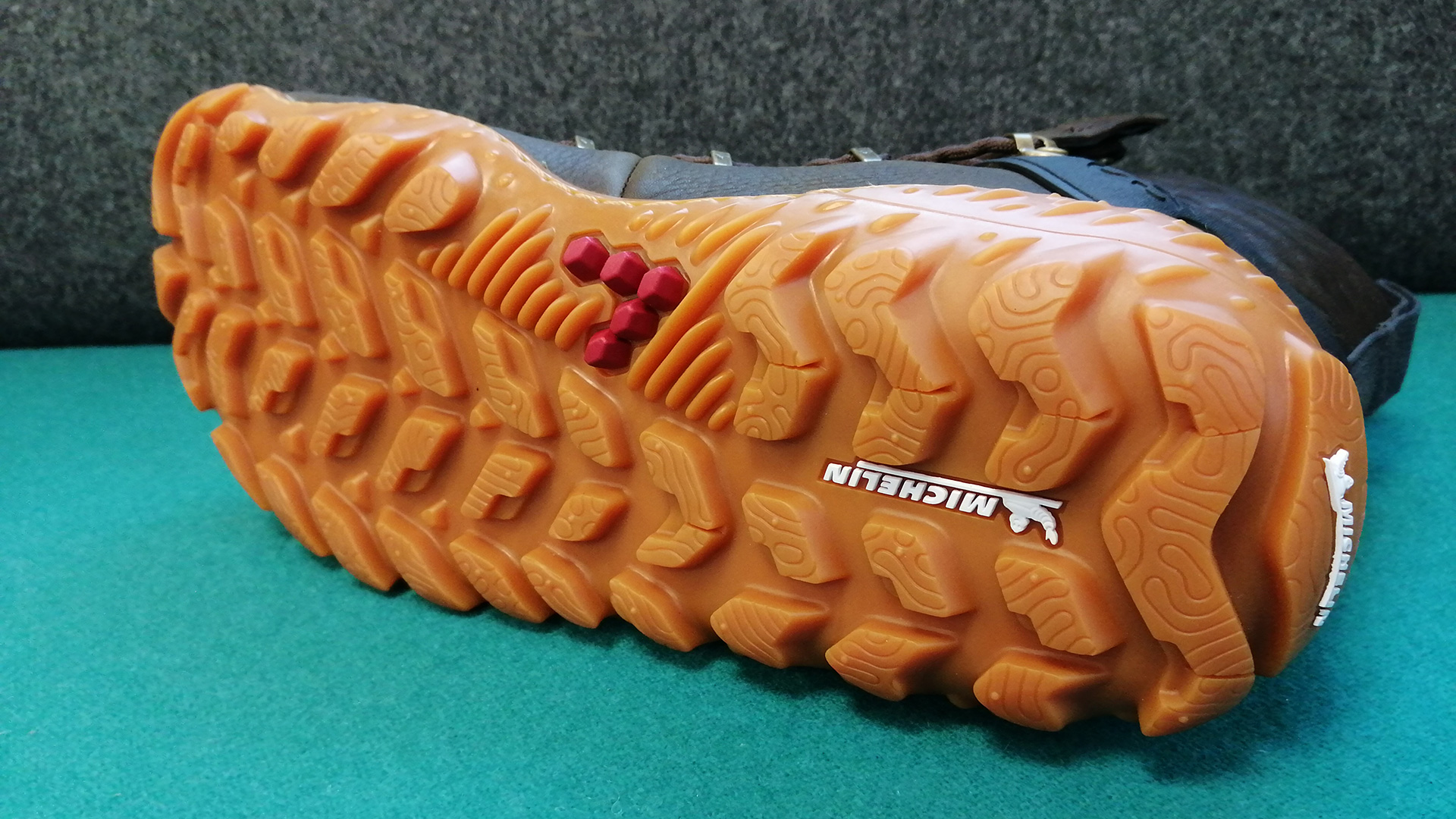Vivobarefoot Tracker Forest ESC review: minimalist boots get a high-performance makeover
The Vivobarefoot Tracker Forest ESC are pared-back boots designed for extreme terrain. Here's our review

With the Vivobarefoot Tracker Forest ESC, the brand has tried to create barefoot boots suitable for the most serious adventurers, and it sort-of succeeds. The grip and comfort are excellent, but there are still situations where a hardier boot, with a more stable sole and waterproofing built-in, would be our choice.
-
+
Very comfortable out of the box
-
+
Excellent grip on tricky and slippery ground
-
+
Freeing sensation
-
-
Wide fit is a bit unwieldy
-
-
Ankle bumper rubs if not in the right place
Why you can trust T3

Launched May 2021, the Vivobarefoot Tracker Forest ESC boot is part of the brand's 'Extreme Survival Collection'. Vivobarefoot has a very clearly defined USP. This eco-conscious brand makes minimalist footwear that removes the extra padding and chunky soles found in most of today's best hiking boots for men and women to create thin-soled, wide, and flexible footwear that helps you connect with the earth.
While these kind of boots have their place, they're not especially well suited to extreme conditions, and can lack grip (as we noted in our Vivobarefoot Tracker II hiking boot review). The Tracker Forest ESC aims to tackle that issue by packing in new features aimed at serious adventurers. Vivobarefoot says the Tracker Forest ESC is its most advanced hiking footwear yet – the design has been carefully developed over the past four years. They're available to buy now from Vivobarefoot in Mens or Womens versions for £190 / USD $220.
So does this new design actually work for hardy adventurers? Read on for my full Vivobarefoot Tracker Forest ESC boot review.
Vivobarefoot Tracker Forest ESC boot review: design
The headline feature in the Tracker Forest ESC is the Michelin ESC Sole, which was developed in collaboration with the famous tyre company. Built from high-performance rubber, it features multi-directional, 'claw like' lugs for superior grip. While others in the Vivobarefoot range have curved, smooth edges that can be slippery, these sport a textured arch and edge traction to help you tackle trickier terrain. True to Vivobarefoot's brand DNA, there's still a thin and flexible sole, coupled with a wide toe box that gives your toes room to spread.
Elsewhere, Vivobarefoot has kept things simple, as you'd expect. The upper is made from leather with a sandwich mesh lining. There's no Gore-Tex here – you're relying on the natural water resistance of the leather to keep your feet dry. An all-natural Renapur Leather Balsam comes included with the boots to keep the boots in good condition. However, that natural waterproofing will only get you so far. To that end, the mesh is designed to promote breathability and keep moisture away from your skin, encouraging the boots to dry out quickly.

Vivobarefoot Tracker Forest ESC boot review: performance
The Michelin Esc Sole does a great job of delivering grip on ascents, descents and on slippery terrain, with the aggressive VV shaped lugs performing reliably well in our tests. Vivobarefoot suggests you'll be able to wear these on tricky, technical trails, but we still wouldn't choose them for that – while the edge and arch texturing adds some welcome extra grip to the soles, the wider fit around the toes means these lack some precision.
This the first pair of barefoot style boots I've tried, and I found them much, much comfier than I'd expected. There's none of the bulk of traditional hiking boots, they're light and flexible, and comfy to wear straight out of the box. While the sole is thin and pleasantly flexible, it's not so thin as to be impractical – there's enough of a buffer there that you're well protected from rough ground (I suspect the Tracker Forest ESC has some of the chunkier soles in the Vivobarefoot range).
It's is worth noting, however, that this flexible sole also means you're relying on your own foot and calf muscles to keep your foot stable and supported, which gets tiring if you're taking on challenging terrain over longer distances.

- Add a pair of the best hiking socks
- Tog up with a pair of the best walking trousers
- ... or the best hiking leggings
Your feet are basically all on one level here, which is a bit of an odd sensation if you're used to footwear where the heel is raised. The other main difference compared to other boots I've tested is that the toebox is much wider. I've got naturally quite narrow feet (although not excessively so) and they did feel a bit 'flappy' at first. While aesthetically, these boots might not be for everyone, there's lots of room for your toes to spread out – if you speak to fans who wear this brand exclusively, they'll often tell you their feet have actually changed shape as a result.
While the leather will keep the water out in moderately damp conditions, it's not going to keep you dry in a sustained downpour, or wading up a shallow stream, so again we'd perhaps not pick these if we were expecting torrential rain (it might be more 'natural', but damp feet are uncomfortable, whichever way you dress it up).
While the overall protection is minimal, Vivobarefoot has added a shaped ankle bumper to give you a bit of a buffer against scrapes. Unfortunately it's in very slightly the wrong place for my feet, which means it can rub when I wear these for longer walks. I've spoken to another wearer who has had exactly the same issue, so it's something to check when you're trying these on at home.
Vivobarefoot Tracker Forest ESC boot review: price and verdict
With an RRP of £190 / USD $220, the Vivobarefoot Tracker Forest ESC boots are at the pricier end of the hiking boot market. Are they a good choice for hardcore hikes and tough terrain? Probably only if you're a dedicated disciple of the barefoot movement. The wider fit means they lack some precision, you might miss the support of a more solid sole when traversing uneven terrain for long periods, and there's no getting around the fact that leather is only so waterproof.
That's not to say you should discount these boots completely – in fact, there's plenty to recommend them for mid-level adventures. They're extremely comfortable, and the flexible, pared-pack design feels much more freeing than traditional, bulky hiking boots. The sole provides enough a buffer that they're still suitable for wear on rough terrain, and the revamped sole provides reliably good grip on slippery and rocky ground. As a second pair of boots for all but the hardiest of adventures, we're sold.
Sign up to the T3 newsletter for smarter living straight to your inbox
Get all the latest news, reviews, deals and buying guides on gorgeous tech, home and active products from the T3 experts
Ruth is a lifestyle journalist specialising in sleep and wellbeing. She has tested more mattresses than her small flat can handle and will talk at length about them to anyone who shows even a passing interest, and has had to implement a one-in-one-out pillow policy for fear of getting smothered in the night. As well as following all the industry trends and advancements in the mattress and bedding world, she regularly speaks to certified experts to delve into the science behind a great night's sleep, and offer you advice to help you get there. She's currently Sleep Editor on Tom's Guide and TechRadar, and prior to that ran the Outdoors and Wellness channels on T3 (now covered by Matt Kollat and Beth Girdler-Maslen respectively).
-
 Your parents probably can't wait for this huge new Netflix mystery movie
Your parents probably can't wait for this huge new Netflix mystery movieThe Thursday Murder Club will be big
By Max Freeman-Mills Published
-
 Liam Gallagher’s legendary Berghaus jacket is back, just in time for the Oasis reunion
Liam Gallagher’s legendary Berghaus jacket is back, just in time for the Oasis reunionDress like it’s 1997
By Matt Kollat Published
-
 Ninja expands colour range for its best-selling coffee machine
Ninja expands colour range for its best-selling coffee machineGunmetal Gray and Trace Blue join the original Stainless Steel model
By Lizzie Wilmot Published